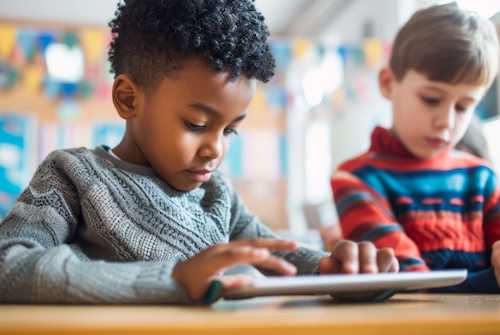Key points:
When our leadership team at Firthmoor Primary met with an OPAL (Outdoor Play and Learning) representative, one message came through clearly: “Play isn’t a break from learning, it is learning.”
As she flipped through slides, we saw examples from other schools where playgrounds were transformed into hubs of creativity. There were “play stations” where children could build, imagine, and collaborate. One that stood out for me was the simple addition of a music station, where children could dance to songs during break time, turning recess into an outlet for joy, self-expression, and community.
The OPAL program is not about giving children “more time off.” It’s about making play purposeful, inclusive, and developmental. At Firthmoor, our head teacher has made OPAL part of the long-term school plan, ensuring that playtime builds creativity, resilience, and social skills just as much as lessons in the classroom.
After seeing these OPAL examples, I couldn’t help but think about how different this vision is from what dominates the conversation in so many schools: technology. While OPAL emphasizes unstructured play, movement, and creativity, most education systems, both in the UK and abroad, are under pressure to adopt more edtech. The argument is that early access to screens helps children personalize their learning, build digital fluency, and prepare for a future where tech skills are essential.
But what happens when those two philosophies collide?
On one side, programs like OPAL remind us that children need hands-on experiences, imagination, and social connection–skills that can’t be replaced by a tablet. On the other, schools around the world are racing to keep pace with the digital age.
Even in Silicon Valley, where tech innovation is born, schools like the Waldorf School of the Peninsula have chosen to go screen-free in early years. Their reasoning echoes OPAL’s ethos: Creativity and deep human interaction lay stronger cognitive and emotional foundations than any app can provide.
Research supports this caution. The Royal College of Paediatrics and Child Health advises parents and schools to carefully balance screen use with physical activity, sleep, and family interaction. And in 2023, UNESCO warned that “not all edtech improves learning outcomes, and some displace play and social interaction.” Similarly, the OECD’s 2021 report found that heavy screen use among 10-year-olds correlated with lower well-being scores, highlighting the risks of relying too heavily on devices in the early years.
As a governor, I see both sides: the enthusiasm for digital tools that promise engagement and efficiency, and the concern for children’s well-being and readiness for lifelong learning. OPAL has made me think about what kind of foundations we want to lay before layering on technology.
So where does this leave us? For me, the OPAL initiative at Firthmoor is a powerful reminder that education doesn’t have to be an either/or choice between tech and tradition. The real challenge is balance.
This raises important questions for all of us in education:
- When is the right time to introduce technology?
- How do we balance digital fluency with the need for deep, human-centered learning?
- Where do we draw the line between screens and play, and who gets to decide?
This is a conversation not just for educators, but for parents, policymakers, and communities. How do we want the next generation to learn, play, and thrive?
This post is exclusively published on eduexpertisehub.com
Source link

